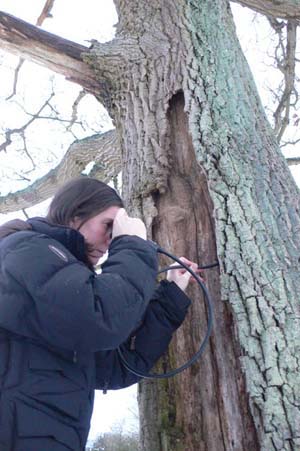Bat Surveys-Trees
Most species of bats in the UK roost in trees as well as buildings. Features used by bats include cavities in trunks accessed by rot or woodpecker holes, crevices created by split and torn limbs and gaps behind plates of bark and ivy.
Roosts may be at all heights and on all aspects. Split limbs high on southfacing aspects offer good maternity roost sites for bats which need to keep warm but away from predators.
Survey methods to assess trees include searching potential roost features from a ladder, platform/lift or by climbing and searching with an endoscope or fibrescope; this should normally be supplemented by evening and dawn surveys watching for bats at roost sites and listening with bat detectors. Because of the difficulties surveying trees for bats, roosts are probably frequently overlooked. On large schemes where a number of potential roost trees could be affected, consideration should be given to additional methods such as radio tracking.
Scroll through the pictures below to see a range of bat roost sites in trees.









.jpg)











